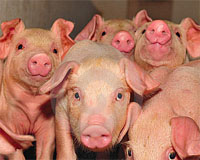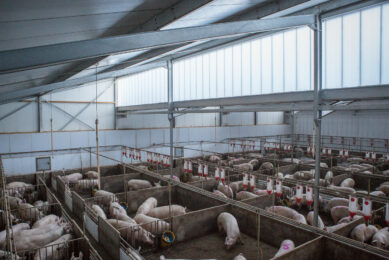Monitoring pigs to improve welfare and production

Sensors, CCTV and chips find their way into the pig house for the sake of health and welfare in pigs. A new research project restructures and adapts the technology.
Pig of all ages will find it much harder in the future to keep their secrets secret. If they go to the wrong end of the pig sty to do their business, if they start to bite the tails of their pen pals, this behaviour can be recorded using state-of-the-art monitoring and registration technology – even in the dead of night. Automatic monitoring can also keep an eye on the health of the pigs.
There are already a number of systems in circulation that monitor different conditions in the pig house. But they do not always speak to each other. A new five-year research project that scientists from Aarhus University participate in aims to change that. The project is coordinated by University of Copenhagen and has just received 20m DKK from the Danish Agency for Science, Technology and Innovation under the Ministry of Science, Innovation and Higher Education.
The project aims to develop and improve the current information and communication technologies for the monitoring of behaviour and other aspects of the lives of young pigs to improve animal welfare and production. This will involve the use of advanced statistical and analytical methods of their management.
There are currently many technological opportunities for monitoring. The room temperature, the water and feed intake of the pigs and their growth rate and activities are all factors that can be automatically monitored and recorded. This means the farmer can react at an early stage if problems arise in the pig pen. The challenge is to get the systems to talk to each other and to ensure that the farmer only needs to react on the most important information.
In the new project the scientists will be developing a system that can incorporate all the information and construct a data set on individual farms. With information that is interconnected, it will be easier for the scientists to identify links between different factors.
You can, for example, link the temperature in the animal house to the incidence of diarrhoea or the animal density with the incidence of tail biting. If certain relationships appear to be stable, they can be used to prevent the incidence of new problems right down to pen level.
The investigations will focus on certain phases in the life of the pig. The phases are the introduction to a new pen, the adaptation to a new pen, the growing phase, the final period before being moved or slaughtered and the move itself to a new pen or to the slaughterhouse.
Some of the factors that the scientists will keep an eye on are how quickly the animals locate the water supply and the feed in a new pen, where and when incidences of diarrhoea or tail biting arise, the growth and welfare of the pigs and their behaviour in situations of rest, play, fighting, meals and excretion.
The project is a collaboration between the University of Copenhagen, who are the leaders of the project, Aarhus University, the Pig Research Centre and the private companies Skov A/S, Prosign A/S and TNM A/S.
Further information: senior scientist Erik Jørgensen, Department of Molecular Biology and Genetics, email: erik.jorgensen@agrsci.dk, telephone: +45 8715 8009
(Text: Janne Hansen)
Source: Aarhus University











